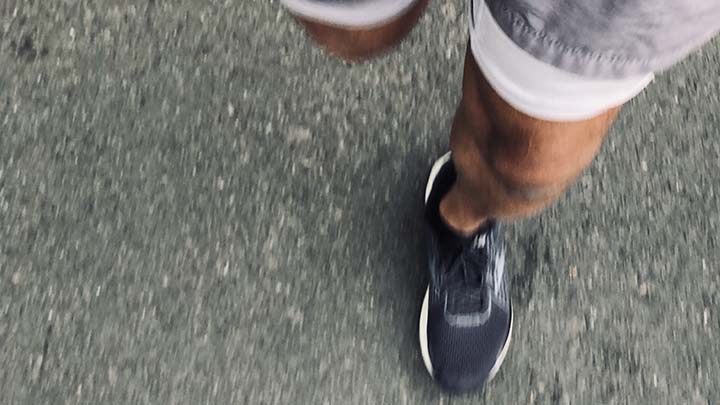
Like many runners, NY Flyers and otherwise, I’ve become something of a shoe fanatic over the course of three marathons and the seemingly endless training runs. It all started for me with a pair of neon yellow Asics, my first ever marathon shoe. Selected by me in equal parts for their fashion (the neon trend was red-hot) and functionality, I felt assured that those shoes would carry me to the finish line in fine form. Instead, I learned the valuable lesson that the shoe can make, or break, the runner (to an extent).
Fast forward to today and I will tell you unequivocally that Nike makes the best running shoes on the market. That certainly wasn’t always the case (Nike Shox, anyone?) but years of research and development are paying off in spades.
Prior to the 2016 debut of the Nike Zoom Vaporfly 4%, the general consensus around racing shoes was “less is more.” Many distance runners would train in well-cushioned shoes and switch to thinner soles on race day to carry minimal weight and presumably run more efficiently.
Nike flipped this belief on its head with the creation of ZoomX foam, which reportedly weighs less and returns more energy than any foam compound before it. Together with a carbon fiber plate in the midsole, the Vaporfly 4% was designed to return 4% more energy to runners (hence the name), translating into precious minutes over the course of a race.
The shoe quickly became omnipresent at nearly every distance racing event and race podium, eventually drawing the attention of the World Athletics, the global governing body of track and field, and drawing comparisons to the full body swimsuits that helped athletes shatter records at the 2008 Beijing Olympics (and called into question the integrity of the sport). Although new regulations on footwear were introduced in 2020, World Athletics determined that Nike’s Vaporfly was in compliance, clearing the way for Nike to continue to innovate and improve an already world-class shoe.
If you’re like me, I couldn’t resist trying these shoes for myself after seeing some of the best runners in the NYC Marathon zip past in their eye-catching shoes. They quickly became my favorite shoes – although the elevated heel does take some getting used to – which is why I encourage others to wear their shoes for both training and racing. If you’re interested in trying them for yourself, rest assured in Nike’s generous 60-day return policy, which includes used items; I put this to the test several times myself and they accepted each return without question.
Below are my quick takes on some of Nike’s latest kicks:
- Great entry-level shoe with many of the premium features of the Vaporfly at a much lower price point.
- These are my OG Nike shoes and ones that I keep going back to time and time again.
- Generally recommend sizing a half-size up from your usual footwear given the snug fit of the shoe.
- I tried these thinking that they would be a slightly less expensive version of the Alphafly currently on the market.
- Although the responsive cushioning was true to form, I found that the detached tongue rubbed my ankle uncomfortably (even more noticeable in such a fitted shoe) and the additional foam at the back of the heel felt superfluous (almost to the point of creating drag).
- Despite the fanfare around the Zoom air pods that are included in this model, I felt that they added weight to the shoe without any real benefit – vaguely reminiscent of the days of Nike Shox.
Nike Air Zoom Alphafly NEXT% Flyknit
- Arguably worth the cost, as much as it pains me to say it.
- Features that were bothersome in other models – air pods and pronounced heel – seem to come together in a much more functional manner in this shoe.
- Great response and momentum.
- Flyknit design is much more breathable than I had anticipated (you can see your socks quite clearly) so not ideal for wet or cold conditions.
- True-to-size although some may still prefer to size-up half a size given the overall snug fit.
-Casey S.







